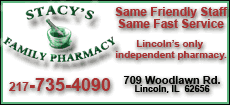 Review by Review by
Richard SumrallTwenty-five years ago, health conditions
related to autism, attention deficit disorder and attention deficit
hyperactivity disorder were rare in children. Today 1 in 150 children are
diagnosed with autism while more than 2 million are considered to have some
form of ADD or ADHD. In her new book, "Eating for Autism," dietitian and
children's health advocate Elizabeth Strickland "debunks the myths
surrounding nutritional interventions and fully explains the
nutrition-autism connection for the first time."
The plan
The basic principle of the plan is the transition to a healthy diet. The
focus of this healthy diet is the elimination of synthetic food additives,
limiting the intake of trans fat, reducing the intake of highly processed
foods and avoiding refined sugar. It is essential to replace these unwanted
substances with healthy nutrients, especially those containing protein,
carbohydrates, fiber and the three healthy fats.

An often overlooked but vital nutrient is clean water. To help parents
determine how much water to give their child, Strickland has assembled a
useful table that charts the adequate daily levels of water intake for
children of both genders and different age groups.
Another concern parents have is the need for a daily nutritional
supplement. According to Strickland, children who consume a variety of
healthy foods generally do not need a supplement. However, she points out
that children with autism usually eat a more restrictive diet that promotes
vitamin and mineral deficiencies. She gives some helpful guidelines parents
can follow when looking for high-quality over-the-counter supplements for
their child. These supplements should contain 100 percent of the recommended
daily allowance for children and have no artificial colors, sweeteners,
additives or common allergens.
Parents should also be careful to monitor their child's intake of omega-3
fatty acids. New research suggests that omega-3 acids can improve poor
learning and behavioral problems while decreasing a child's hyperactivity.
Currently there is no recommended daily allowance for omega-3 acids in
children. Depending on a child's age, Strickland recommends 0.7-1.6 grams of
alpha-linolenic acid, a plant-derived omega-3 fatty acid.
[to top of second column]

 |

The remaining components of a healthy diet plan for your autistic
child include resolving your child's feeding problem (picky eaters,
problem feeders), healing your child's gut (gastrointestinal
problems are common in autistic children), identifying and treating
your child's food allergies (these can exacerbate the child's degree
of sensory integration dysfunction), and exploring the need for a
special elimination diet (a controversial approach not entirely
supported by the medical community).
Gluten- and casein-free recipes for kid-friendly foods
Strickland is blunt about the impact and effects of this diet:
"The gluten-free, casein-free diet is one of the most challenging
nutritional interventions you'll face in my 10-step nutrition plan.
... Finding 'safe' foods that will appeal to your child can be
tough." To help parents meet this challenge, the book includes an
extensive collection of recipes for beverages, breads, breakfast,
cakes and cookies, condiments, crackers and snacks, everyday meals,
microwave baking, soups, and vegetables. These recipes are designed
to increase the intake of omega-3 fatty acids, reduce the exposure
to unsafe ingredients and encourage the child to enjoy delicious,
nutritious meals that are easy to prepare.
Nutritional information
Seven appendixes offer valuable information for parents of an
autistic child. The topics include choosing a registered dietitian;
selecting the best sources for proteins, calcium and fiber; the RDAs
for vitamins and minerals; the goals and objectives of a customized
individual education program; sample data collection forms used to
determine the necessity of a specialized diet or the need for
nutritional supplements; a sample plan to detoxify the child of
harmful chemicals and substances; and a list explaining the basic
laboratory tests that parents can use to design their child's
nutrition plan.

"Eating for Autism" is an informative and well-researched guide
for parents of autistic children. According to Strickland, "even the
most well-read, technologically savvy parent can become confused and
overwhelmed when it comes to nutrition therapy. ... 'Eating for
Autism' will guide you step by step through the process, starting
with basic nutritional interventions and gradually moving to more
advanced levels of nutritional therapy." This book is recommended to
parents and caregivers of children who have autism, ADD or ADHD.
[Text from file received
from Richard Sumrall,
Lincoln Public Library District] |